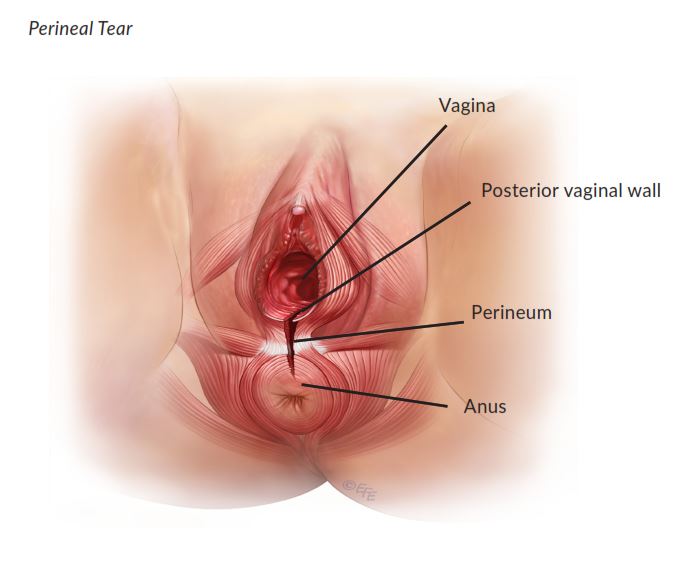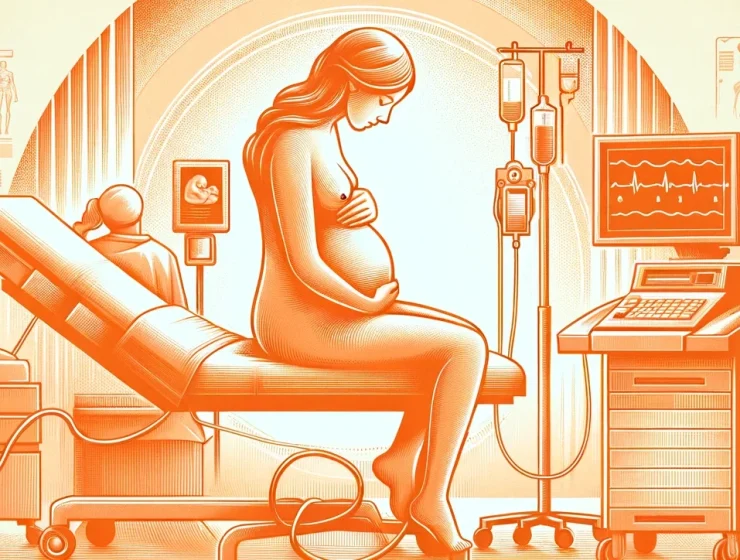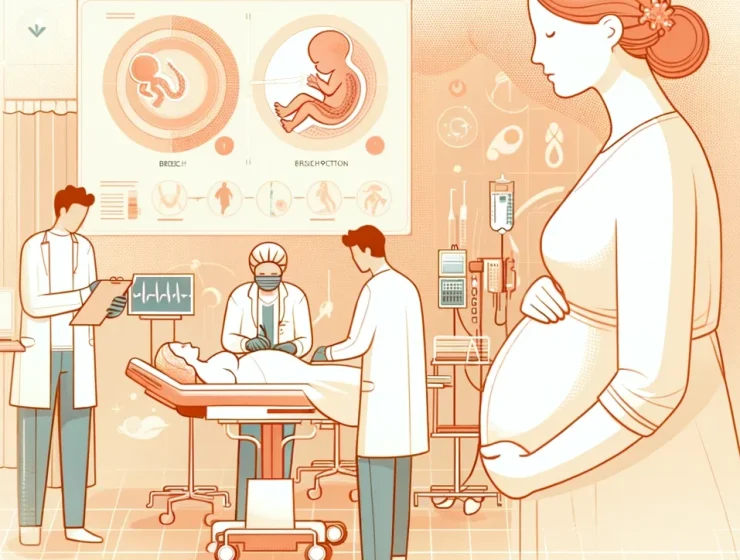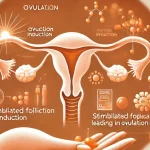Today we are discussing a topic that may not be the first thing you think of when you have a little one, but it is certainly something that is important to be informed about: the total rupture.
You might be wondering, what exactly is that? And why should I know more about it? Don't worry, we are ready to answer these questions. We don't want to scare you unnecessarily, but being well informed also means being ready for the reality of motherhood and everything that can come with it.
A "total rupture" is a complication that can arise during childbirth. It's one of those things you might prefer not to think about, but knowledge is power – and in this case also an important step towards recovery and prevention.
In this article we will take you through everything you really need to know about this topic: from what a total rupture is, how it can happen, the symptoms by which you can recognize it, to the best ways for treatment and recovery. We want you to feel supported and prepared every step of the way.
Let's tackle this perhaps difficult, but oh so important information together. Because at Midwives Lelystad we believe that properly informing you is part of our care. Are you reading along?
What is a total rupture and how do you recognize it?
When you are faced with a perineum that not only tears, but where the tear extends into the muscles between the vagina and the anus and sometimes even into the intestinal mucosa, we are talking about a total rupture. It is a serious form of tearing that mainly occurs during vaginal deliveries. The impact of this on your recovery process can be significant and it is important to recognize the signals early.
How do you recognize a total rupture? The symptoms are often clear but can sometimes be underestimated in the hectic pace of childbirth or due to fatigue:
-
- Intense pain that does not subside after childbirth
-
- Visible trauma around the perineum
-
- Difficulty urinating or involuntary loss of urine or feces
-
- Excessive bleeding after childbirth
-
- Feeling of an 'open' wound between vagina and anus
Do you recognize one or more of these signals? Then contact your midwife or doctor immediately. Early diagnosis and treatment are crucial for a good recovery.
| Type of Tear | Characteristics | Recovery time |
|---|---|---|
| Slight tear | Limited to skin and superficial muscles | 1-2weeks |
| Total rupture | Extensive damage to muscles and intestinal mucosa | Several months |
Recognizing a total rupture is the first step towards adequate recovery. Always listen carefully to your body and, if in doubt, seek professional help. You are not alone and with the right care and support you will come out of this stronger!
The steps of recovery after a total rupture
The path to recovery is characterized by a number of crucial steps, each with their own importance and timing. Immediately after the diagnosis of a total rupture, it is essential to start resting. This means physical rest, moving as little as possible to promote healing and prevent further tension on the wound. During this period it is also extremely important to manage the pain properly. This can be done with the help of painkillers prescribed by your treating physician. Pain management is not only crucial for your comfort but also plays a role in preventing stress, which can slow down the recovery process.
In the next phase of the recovery process, attention to personal hygiene is very important to avoid infections. This means that you must carefully care for the wound according to the instructions of your midwife or doctor. Physiotherapy can also be discussed to restore strength and flexibility and address any complications such as incontinence or sexual dysfunction. Nutrition also plays a key role in recovery; A diet rich in vitamins and minerals can give the body the necessary building blocks to recover.
Every step on the path to recovery is important and contributes to complete healing. Listen carefully to your body and follow the advice of your healthcare professionals.
| Phase | Activities |
|---|---|
| 1. Rest & Pain Management | – Minimal movement -Use painkillers |
| 2. Personal hygiene | - Wound care – Follow instructions |
| 3. Physiotherapy & Nutrition | – Start exercises - Healthy food |
With dedication and support, you can successfully walk the road to recovery. Remember, everyone recovers at their own pace. Be patient with yourself.
Tips for a successful recovery at home
Make sure that you take the time for yourself and your body after a total rupture. Rest is crucial; your body has just delivered a top performance and needs sufficient time to recover. But, taking rest does not necessarily mean that you have to lie still all day. **Light movement** can actually be good to keep circulation going and prevent complications such as thrombosis. For example, go for short walks, even for a few minutes at a time, and gradually increase the duration as you feel stronger.
In addition to physical care emotional care just as important. A total rupture can have a severe impact not only physically, but also mentally. Talk about your experiences and feelings with your partner, a good friend, or consider professional help if you notice that you cannot resolve it yourself. Below you will find useful tips that can support recovery at home:
-
- Keep the wound clean: Infection prevention is essential. Clean daily with lukewarm water and dry thoroughly.
-
- Pain management: Use painkillers as prescribed by your doctor. Ice packs can also help reduce swelling and pain in the first days after delivery.
-
- Watch your diet: Eat enough foods rich in vitamin C and E and zinc to support wound healing. It is also important to drink plenty of water to keep stools soft and prevent constipation.
-
- Protect your peace: Accept help from others around you so that you can fully focus on your recovery and caring for your baby.
| Activity | Recommended duration/frequency |
|---|---|
| Short walks | Daily, start with 5 minutes and increase gradually |
| Wound care | 'Air' twice a day and do not use soap while showering. Rinse with water after visiting the toilet. |
Recovery takes time and it is important to give yourself that time. Listen to your body and don't force anything; After all, recovery from a total rupture is not a race. By following the above advice, you support your body in the best way possible towards a full recovery.
When is it time to seek professional help?
Recognizing the time to seek professional help can sometimes be difficult, especially when it comes to a topic as delicate and complex as a total rupture. But rest assured, if you recognize yourself in one of the following situations, it is high time to take that step. First, if your pain after childbirth does not seem to diminish, but rather becomes more intense or if you notice that you have difficulty with daily activities such as sitting or walking. Secondly, a constant need to go to the toilet or the opposite, constipation, can also indicate complications. It is essential not to minimize your concerns in these cases and to seek professional help.
All midwives at Midwives Lelystad are specialized in supporting women who have suffered a total rupture. Our care goes beyond just physical recovery; We also provide emotional and psychological support to help you through this challenging time. Take a look at the table below to understand what we can do for you:
| Form of help | What it includes |
|---|---|
| Physical rehabilitation | Individual sessions aimed at restoring the pelvic floor and surrounding muscles. |
| Psychological support | Conversations with our psychologist specialized in postpartum problems, for emotional recovery. |
| Educational workshops | Workshops on self-care techniques and preventingfuture injuries. |
| Community support | Participating in a support group with women who have similar experiences. |
Even if you are unsure whether your situation is 'serious enough', we advise you to contact us. It's not about how much your problem weighs on a universal scale, but about how it affects you. personally affects. At Midwives Lelystad your well-being comes first. Together we find a path to recovery.
Common complications and how to prevent them
With a total rupture there are various complications that lurk. To avoid these as much as possible, it is crucial to be well informed and take precautions. For example, infections are a common complication after a total rupture. These can be prevented by keeping the wound clean and carefully following the instructions of your healthcare provider. Look for signs of infection such as redness, swelling, or an unpleasant odor and report them immediately. In addition, the risk of urinary incontinence is significant, given the impact on your pelvic floor. Pelvic floor strengthening exercises can be started early during pregnancy to minimize this risk.
In addition, don't worry about the possibility of pain during sex after recovery from a total rupture. This is a common concern, but often temporary and improves with time and proper guidance.
- Using sufficient lubricant
- Communicate with your partner about what feels comfortable
The above are essential tips to increase comfort. Additionally, continue to communicate with your obstetrician or gynecologist about your recovery process and any complications you may experience. They can give appropriate advice and, where necessary, refer to a specialist, such as a physiotherapist specialized in pelvic floor rehabilitation. By being aware of the potential complications and the important steps you can take to prevent them, you will help yourself towards a smoother recovery after a total rupture.
Resume
We hope you found this article informative and useful. We understand that the topic of total rupture is sensitive and may raise some concerns. Don't forget that every birth is unique and that your midwife is there to support you.
If, after reading this article, you still have questions or need a personal conversation, do not hesitate to contact us at Midwives Lelystad. We are ready to guide and assist you with tailor-made professional care – before, during and after childbirth.








